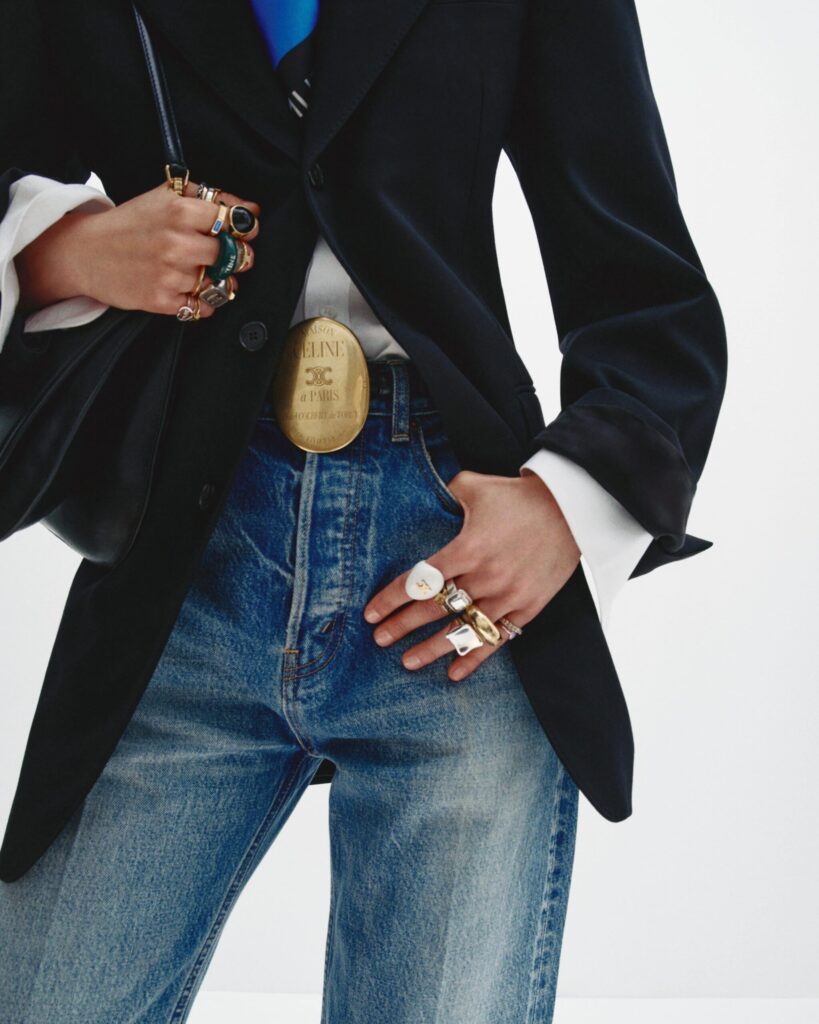Thank you for reading this post, don't forget to subscribe!
Most of us are too young to remember CELINE’s Michael Kors era, but we came of age under Phoebe Philo’s reign — old Céline, if you will. And while Hedi Slimane’s takeover was met with plenty of side-eye, especially when he swapped out Philo’s Philo’s cerebral elegance with a sharper, more rebellious edge, let’s be real here: he’s since made us eat our words.
Slimane’s razor-sharp vision became the blueprint for modern cool, and his CELINE was everything we came to associate with the now: effortless, aloof, and just the right kind of undone. It didn’t help when the Hedi-era boy/girl resurfaced from the depths of digital archives thanks to obsessive self-proclaimed fashion archivists, which made the brand feel sharper than ever. So when Michael Rider — a designer who spent a decade under Philo during her CELINE years — was named as the house’s next creative lead, it wasn’t surprising that some critics bristled.
We didn’t. Why wouldn’t a designer raised in the school of fashion provocation return to a house hungry for more? But to understand why Rider’s appointment makes sense, we need to examine what wasn’t working. Slimane’s CELINE was plagued by valid concerns: that it had a tendency towards clothing so small it seemed deliberately exclusionary; that it had an aesthetic that felt hostile to bodies outside of sample sizes; that it offered a vision bordering on sacrilege in an era defined by democratised fashion discourse and ED TikTok edits. At its worst, Slimane’s CELINE felt like it belonged only to the models wearing it — not the culture consuming it.

Thankfully, we can safely say that association is gone now. Rider’s opening statement with the CELINE Spring 2026 collection frees the brand from that narrative, and maybe, frees the rest of us too. While Slimane’s CELINE honed in on one kind of individual, Rider’s CELINE throws the doors wide open. It’s saturated with a sense of density and fluidity, necessity and improvisation, but also experimentation and fun.
Rather than rejecting the past, the CELINE Spring 2026 collection worked to rebalance all aspects of it. There were callbacks, of course, with clear nods to CELINE’s layered history. Trousers drawn from Philo’s playbook. Peplumed jackets that felt distinctly Michael Kors-coded. Menswear silhouettes that retained Slimane’s biker-cool aesthetic, though this time with more breathing room. It felt like all eras of CELINE at once, though the CELINE Spring 2026 collection also leaned into an ‘80s sensibility — slightly preppy, yet vibrating at a higher frequency than what we’ve seen before at other houses.
Scarves — which were also wrapped by Emiko Oguri on the show invites — was a recurring motif, functioning as a versatile, expressive accessory that grounded the collection in both physical and emotional fluidity. The bags made that intention unmistakable too, with the return of Philo’s iconic Phantom and Rider styles (some even offered zippers in the shape of a subtle yet cheeky smile, offers a confident nod to her legacy and cementing future ‘It’ bags in the market.

It’s noteworthy that Rider’s debut is not about removing what came before but evolving with clarity. By anchoring the show in CELINE’s historic headquarters in Paris and weaving past design codes into something new, Rider signals that this reset, with the reintroduction of all eras, is inherently deliberate. As Rider himself puts it: “Coming back to CELINE, and to Paris, back to 16 rue Vivienne in a changed world, has been incredibly emotional for me. And a complete joy. CELINE stands for quality, for timelessness and for style, ideals that are difficult to catch, and even harder to hold on to, to define, despite more and more talk about them out there.”
He added in his letter that “we worked on translating them into a way of dressing – that attitude, or attitudes, that we feel describe who we are and what we stand for. I’ve always loved the idea of clothing that lives on, that becomes a part of the wearer’s life, that may capture a moment in time but also speaks to years and years of gestures and occasions and change, of the past, the present andthe future, of memories, of usefulness and of fantasy, of life really.”

So in returning to CELINE, Michael Rider hasn’t just revisited the codes of the house but worked to reawakened the past souls of the brand. His debut was deliberately soft, without any signs of seeking for a grand spectacle. Instead, it does what any well-developed collection does: it listens, references, and reinterprets without overthinking things. It acknowledges the past without clinging on to it and looks to the future without abandoning what made CELINE, or even Céline, matter in the first place.
Thus, it’s clear that Rider’s CELINE doesn’t seek immediate perfection — and it’s not, don’t take it the wrong way. There are many ways in which the collection could have done better. Though, one thing’s for sure: it seeks the truth. In doing so, it gives the house a renewed sense of purpose and an opportunity for those who were excluded a new reason to believe in the brand. And CELINE, at last, feels like it has grown into itself today — just as we have over the years.
This article was first seen on Men’s Folio Singapore.
For more on the latest in luxury style reads, click here.



